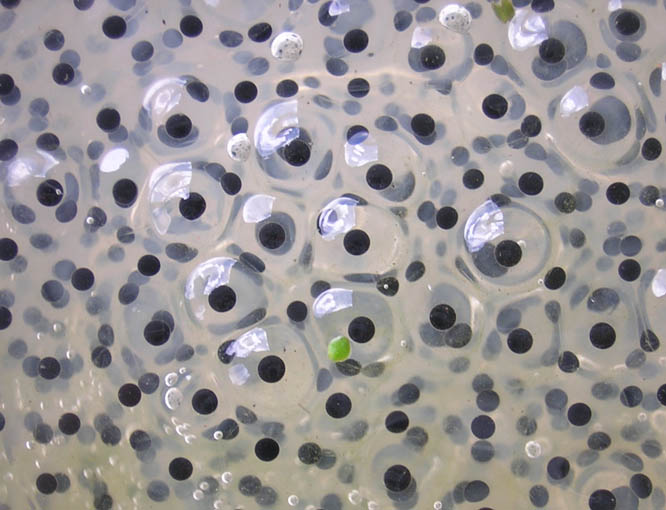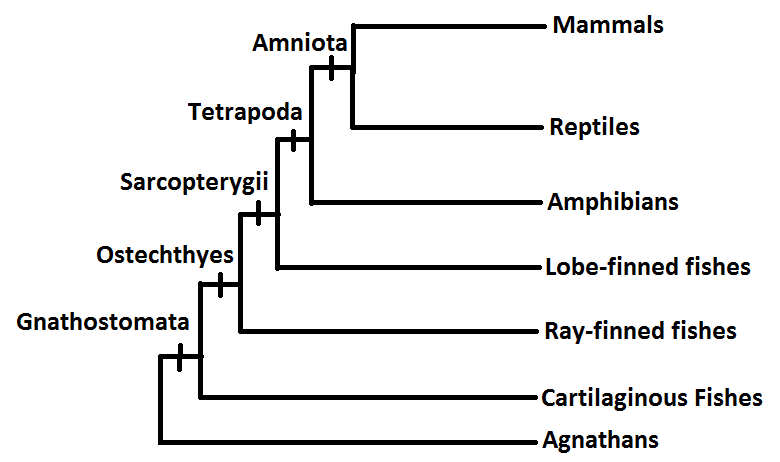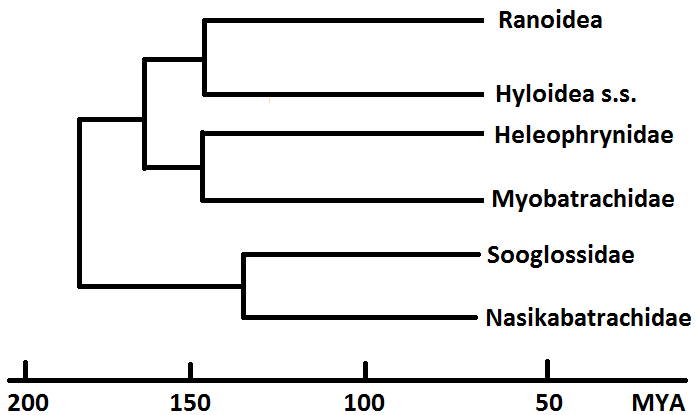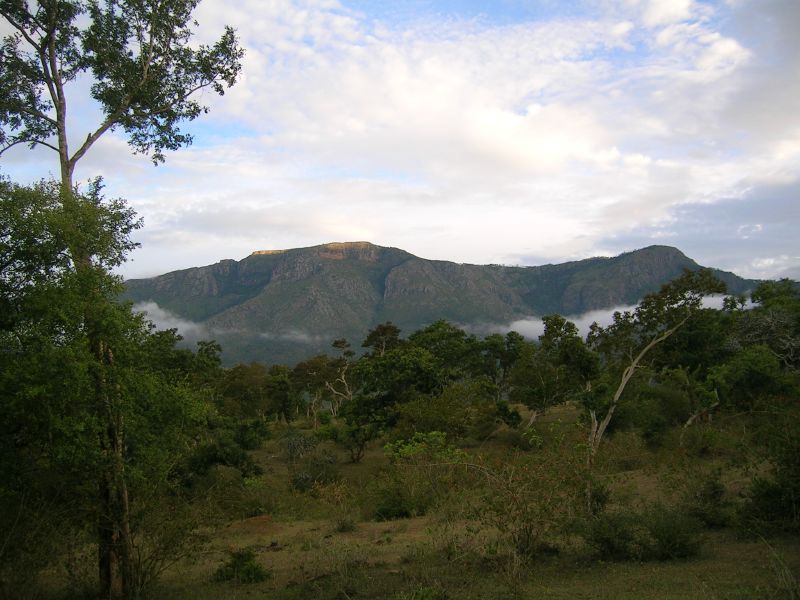Classification
Domain: Eukarya
Kingdom: Animalia
Phylum: Chordata
Class: Amphibia
Order: Anura
Family: Nasikabatrachidae
Genus: Nasikabatrachus
Species: Nasikabatrachus sahyadrensis
Domain: Eukarya
All organisms classified in the domain Eukarya possess membrane bound organelles and a true, organized nucleus enclosed by a nuclear membrane within their cells. They can range in size from microscopic, unicellular organisms to multicellular organisms that are meters long (Corliss, 1982). Multiple specialized organelles in each cell allow the cells of multicellular organisms to form specialized tissues that perform specific necessary functions for the organism’s body.
Kingdom: Animalia
Organisms classified in the kingdom Animalia are multicellular and have cells lacking cell walls, tissues that develop from embryonic layers and rear flagella at some point during their life cycle. These organisms are also heterotrophic, meaning they cannot make their own food and obtain their energy via other organisms. Approximately 99% of Animalia species are invertebrates such as the Damselfly or the Common Earthworm; however, Nasikabatrachus sahyadrensis is a vertebrate and thus is classified in the phylum Chordata with the other vertebrates.
Phylum: Chordata
Organisms of the phylum Chordata possess a notochord, a dorsal nerve cord, a muscular tail above the anus, and pharyngeal slits during some point of their development (Campbell et al. 2008). Nasikabatrachus sahyadrensis, like other amphibians, does not have a tail in the adult stage because as the organism undergoes metamorphosis from an aquatic tadpole to a terrestrial, adult organism, the tail of the juvenile tadpole disappears. Some organisms retain their tails throughout their entire lifetime, however many organisms like the N. sahyadrensis lose their tail as they mature. Chordates range from humans to fish. To learn about other interesting chordates check out these multipleorganisms.net web pages, Fathead Minnow Bufflehead Duck
Class: Amphibia
Class Amphibia includes salamanders,
frogs, and caecilians.  Amphibians are quadrupedal during their
adult life, meaning they walk on four limbs. Amphibians have anamniotic eggs, meaning their eggs are not enclosed by an amniotic
sac, making moisture very necessary during the egg stage of the life
cycle because without an amnion moisture is harder to retain. Amphibians are ectothermic, or cold blooded, organisms
and have moist, glandular skin lacking scales which is extremely
beneficial in respiration processes alongside respiration via lungs
during their adult stage (Duellman, 1982). Click
HERE to learn more about
different amphibian species at amphibiaweb.org.
Amphibians are quadrupedal during their
adult life, meaning they walk on four limbs. Amphibians have anamniotic eggs, meaning their eggs are not enclosed by an amniotic
sac, making moisture very necessary during the egg stage of the life
cycle because without an amnion moisture is harder to retain. Amphibians are ectothermic, or cold blooded, organisms
and have moist, glandular skin lacking scales which is extremely
beneficial in respiration processes alongside respiration via lungs
during their adult stage (Duellman, 1982). Click
HERE to learn more about
different amphibian species at amphibiaweb.org.
Order: Anura
The order Anura includes all frog and
toad species. Anurans lack tales in the adult stage and have
hind limbs that are longer than their forelimbs. Anuran larvae
are tadpoles which respire through internal gills before
metamorphosis, are herbivorous, and develop hind legs before front
legs (Cossel, 1997).
Family: Nasikabatrachidae
Much controversy occurred over the placement of N. sahyadrensis into this new family due to many similarities with the family Sooglossidae; however, due to key morphological differences, the discovery of this organism led to the establishment of a new family, Nasikabatrachidae (Biju and Bossuyt, 2003). Organisms of the family Nasikabatrachidae are classified by fusion of the third carpal to other carpels; in other words, fusion of the third wrist bone to the other wrist bones. Carpal fusion affects the morphology of the organism’s wrist and thus the function. Organisms in the family Nasikabatrachidae have a neopalatine bone; “neo” meaning “modified” and palatine being an irregular bone on each side of the skull that forms the back of the hard palate and helps to form the outer wall of the nasal cavity and floor of the eye socket (Merriam-Webster, 2012). Also, organisms in the Nasikabatrachidae family do not have a parahyoid bone, “a tendon bone arising in the septum between the longitudinal muscles of the isthmus (narrow passage that connects the bone to another part of the body)” (en.academic.ru; Biju and Bossuyt, 2003).
The genus name Nasikabatrachus gets broken down, nasika meaning “nose” and batrachus meaning “frog”. This refers to the unique nose of the frog. Further, organisms of this genus are found to originate from India.
Species: Nasikabatrachus
sahyadrensis
The species name Nasikabatrachus sahyadrensis gets further broken down, nasika meaning “nose”, batrachus meaning “frog” and sahyadrensis meaning “of the Sahyadri region” (Biju and Bossuyt, 2003).
Go to Habitat



